
Using the right assessments for reading is crucial, but it can be confusing. This post is your go-to guide for how to assess reading the best way and make the most out of your reading assessments. There are many formative assessment types and reading tests that can give teachers valuable data and help guide instruction to exactly what the student needs.

The types of reading assessments you use can have a huge impact on student success. Pictured: Comprehensive Reading Assessment
When you assess reading, you want to make sure you are not wasting your (or the student’s) time. You want to make sure you’re actually getting the benefits of assessments and not just dancing through hoops to check off boxes. No one wants to do that!
Instead, you need assessments for reading that add value and guide instruction.
Then, the time you spend assessing reading will pay you back tenfold.
**For a super quick and informal check on what skills your students need and how to help them, try downloading this FREE Reading Intervention Cheat Sheet. It gives student characteristics to help you identify struggling readers and gives tips and activities for each skill they might struggle in.

Click here to download a FREE Reading Intervention Cheat Sheet to help guide your interventions at a glance.
Here is your Complete Teacher’s Guide for How to Assess Reading in ways that actually add value and are worth your time!
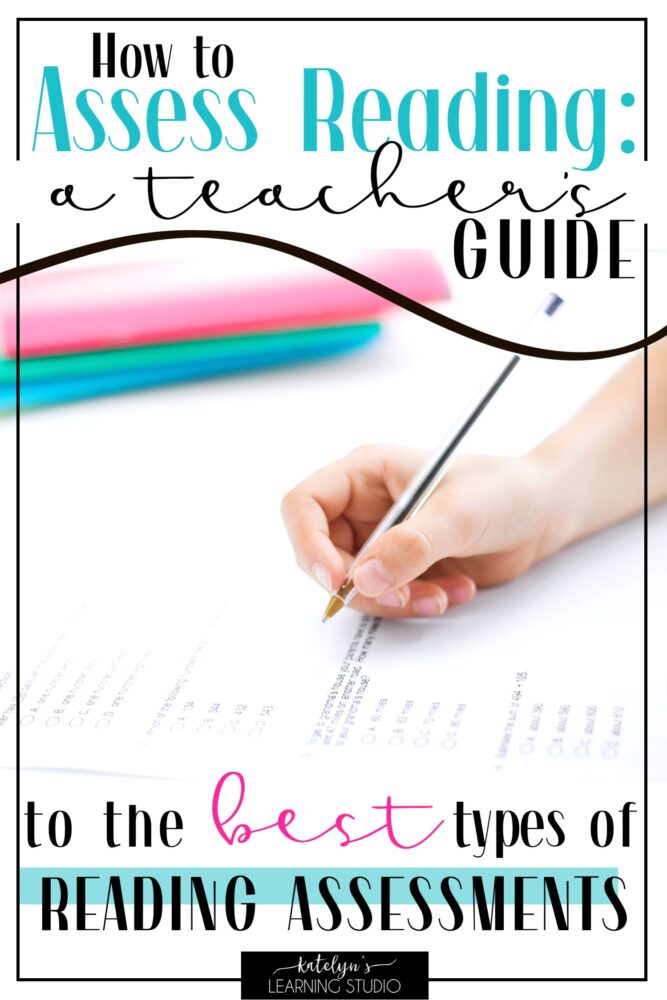
Assess reading the right way with this comprehensive reading assessment guide.
As important as it is to assess reading, we should never just give tests for the sake of giving tests. We need to make sure we are giving USEFUL reading assessments.
We’ll get into numbers 2 & 3 (targeting our intended skills and giving accurate results) in a bit, but first, let’s look at our assessment goals.
**Quick heads-up: If you are looking for a thorough and comprehensive Diagnostic Reading Assessment, this is the one I use!
Each type of reading assessment has a different goal. We’ll choose which type of assessment to give based on our goal.
To start off with, I want to review the two big assessment types, then I will get into specific types of reading assessments.
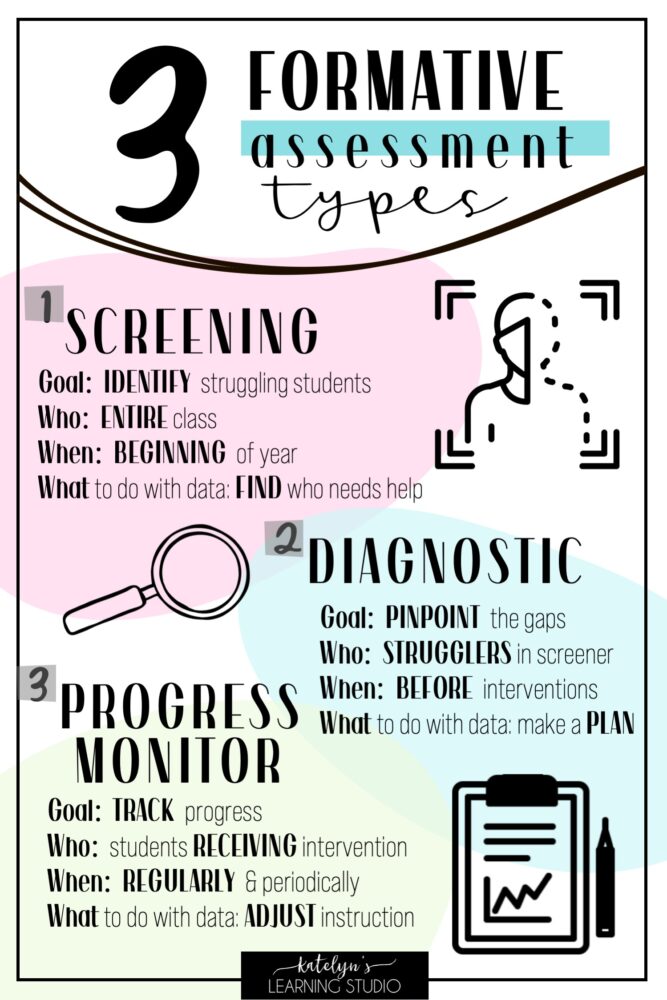
There are 3 formative assessment types that you can use to positively impact student success.
Within the formative category, there are 3 smaller formative assessment types:
Ideally, you give all three formative assessment types in order:
This can apply to whole-class reading instruction as well.
There are 5 main areas of reading that need to be addressed for a complete reading foundation. You can read more about each of the 5 areas in this post: What are the Big 5 Reading Areas and Why You Need to Teach Them, or watch this video:
Which types of assessment are the most reliable depends on which area of reading you are assessing.
Here is where we will look at the most reliable tests to use for each reading area so that we are:
I’ll share examples of reading assessments for each main reading area along with tips for making them as accurate as can be.
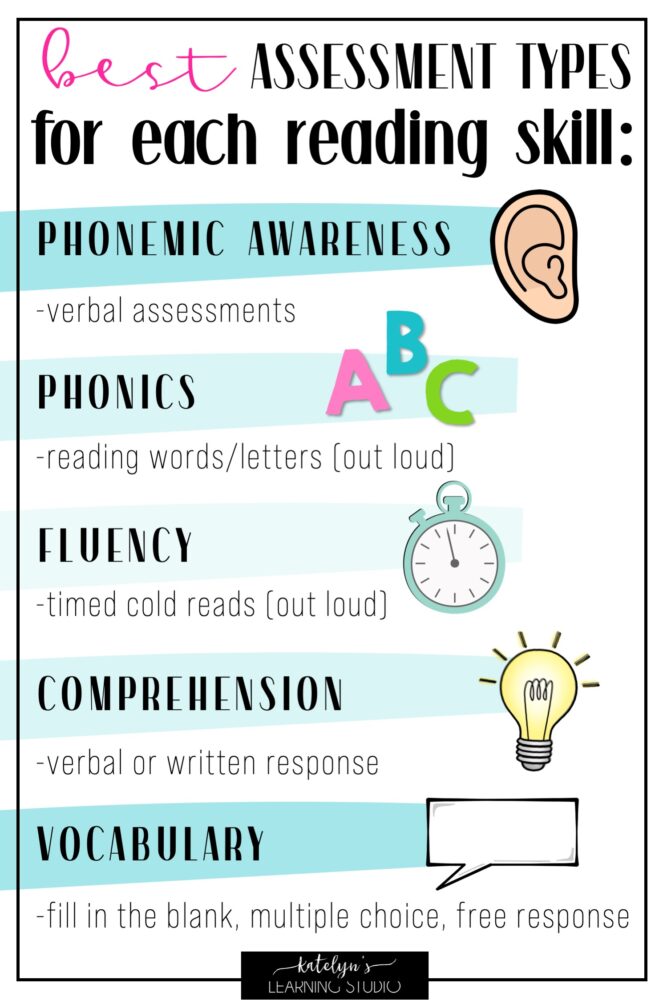
The assessments for reading you use can affect the accuracy of student scores and data.
*Note: It is important to isolate the skill you are testing so you can pinpoint exactly where their problems lie. If assessment tasks overlap different areas of reading, it will be hard to tell which area is causing the errors . Here is a FREE Reading Skills Step Ladder to help you determine which order to test reading skills in.
*Spoiler alert: You might notice a pattern with all of these assessment types! Verbal assessment is often the most reliable way to assess reading.
There’s no getting around it. When testing reading, you should have kids actually read. To get an accurate measure of how good their reading is, they need to read out loud so that you can hear it.

Assess phonemic awareness using teacher prompts and verbal student responses like in the phonemic awareness portion of this Diagnostic Reading Assessment.
The easiest and most reliable way to assess phonemic awareness is through verbal prompts directly between the teacher and the student. The teacher gives a verbal task and then the student says the answer
Phonemic assessment deals with HEARING sounds in words. It does not involve reading or written letters at all. When we include written parts in phonemic awareness assessments, we start including phonics in the assessment.
This means phonemic awareness assessments are ideally given one student at a time directly by the teacher. Unfortunately, they take up a lot of time, but one-on-one teacher attention can also add a lot of value.
*Note: written assessments can be accurate if the student is easily able to follow directions, hold a pencil, circle, and have a good picture vocabulary. Then you can have pictures on a piece of paper and instruct students to circle the pictures that have the same beginning sounds, or the pictures that rhyme, etc.
**Also note: for a sequence of order to assess phonological awareness skills, see this blog post explaining what phonemic awareness is and the skills it includes.
Here are some strategies for phonemic awareness you can use to target these skills after you assess them.
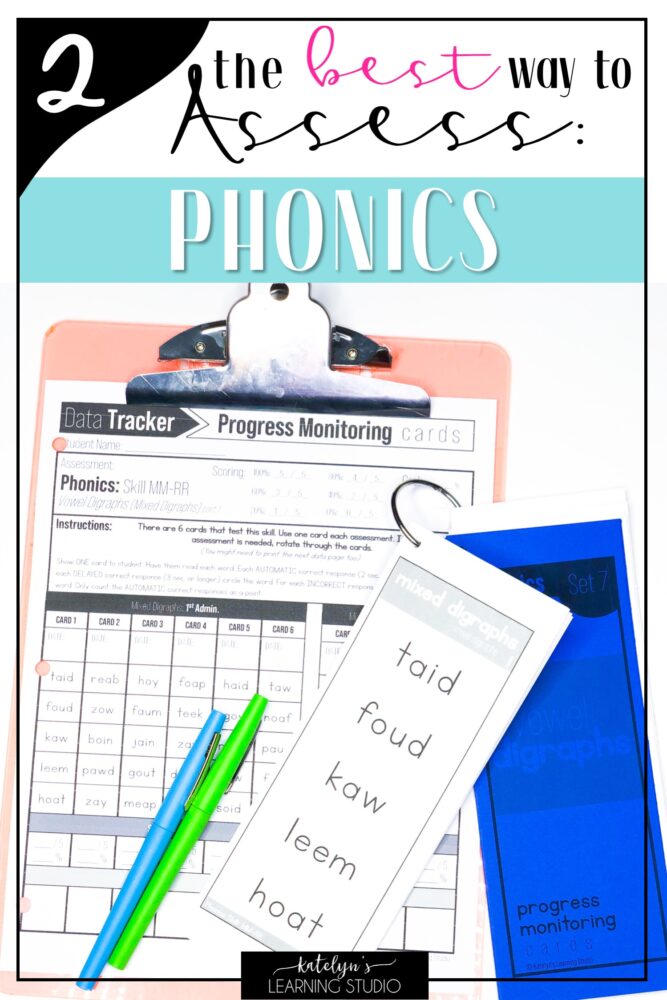
Assess phonics skills by having students read words and letters out loud, preferably nonsense words like in my Phonics Progress Monitoring Kit.
The best way to assess phonics is through verbal assessment, or having them read words out loud. The goal is to get students to decode words, and reading words out loud is the best way to target decoding.
The VERY BEST method is to have them read nonsense words. Nonsense words purely assess students’ phonics knowledge and decoding abilities without letting students rely on guessing from context clues and vocabulary.
When you use real words, students can use advanced language skills to read the first couple of sounds and then guess the words. This does not give us an accurate measure of their decoding skills. (It’s advanced language skills and guessing like this that create the “Compensator-Type” struggling readers. Learn more about compensators and how to help them in this blog post: Using the Science of Reading to Overcome Reading Difficulties.)
I use only nonsense words in my Phonics Progress Monitoring Kit so you can get a true gauge of your students’ phonics ability every week.
You can also use short answer questions in your phonics assessments where you show a picture and have students write the word themselves. Writing words is a higher level than reading words, so you will get more students who struggle with this method. However, any student who can produce the word in writing will also be able to read the word, so your high scores will be reliable.
Multiple choice is one more option that technically could be used to assess phonics, but please be especially careful with this one!
Find out How to Teach Phonics Step by Step and use these 13 Phonics Strategies You Need to Try to help teach the phonics skills that need intervention.
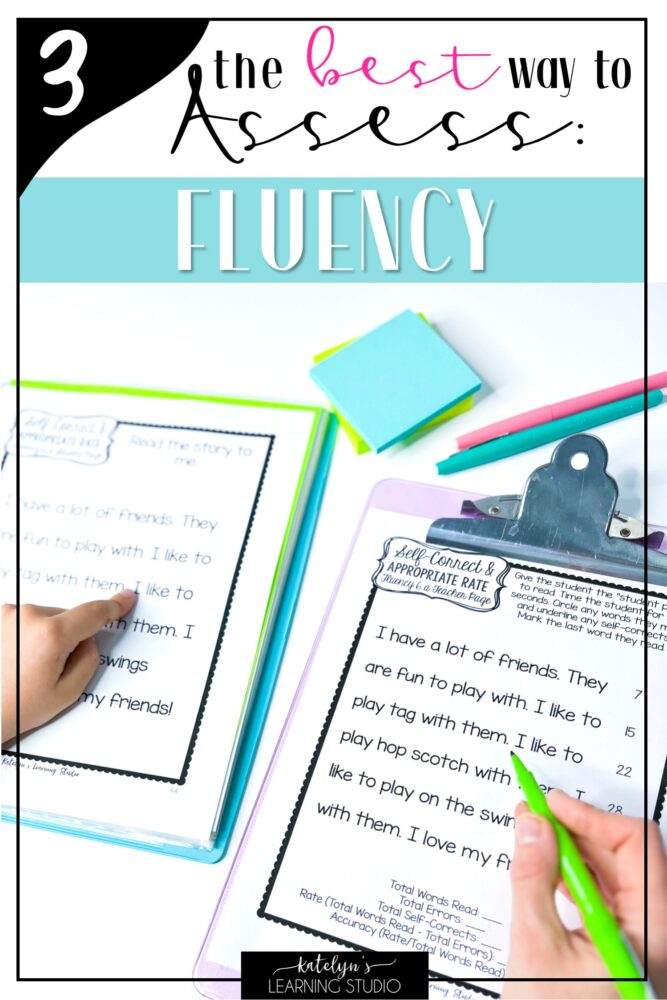
Assess fluency by testing for reading speed and accuracy rate. This Comprehensive Reading Assessment includes easy fluency test pages.
Fluency is one of the more straightforward reading skills to assess. Super simply explained, you have the student read (out loud so you can hear it) for a set amount of time. Then count how many words the student read.
There are 2 important aspects of fluency to track:
Both are important to consider and give valuable insight into what the student needs.
I have a FREE fluency tracker students can use to self-assess their own fluency. It is so motivating for them to visually track and watch their growth!
If you’re looking for ways to help your students read more fluently, here are 11 Ways to Boost Reading Fluency.
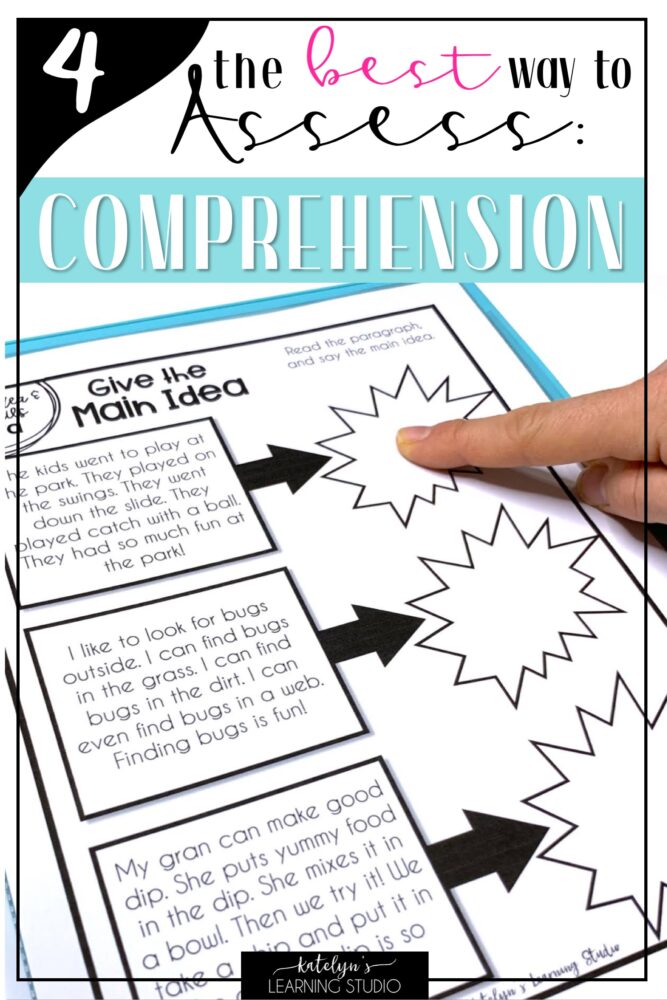
When you assess comprehension, make sure to cover both basic comprehension skills and specific comprehension strategies, like in my Reading Comprehension Intervention Binder.
There are two types of comprehension to consider:
For both types of comprehension, a “free response” (the student provides a response in their own words rather than selecting a pre-written response) is best. Students are just too good at guessing.
An ORAL response is ideal. The student (or teacher for Listening Comprehension) reads the text and then verbally answers the questions. This way students are not hindered by a lack of writing skills. Writing can be overwhelming for students and the assessment becomes more of a measure of what students can write rather than comprehend.
A written response can be a good option for older students who feel comfortable explaining their thoughts in writing.
Multiple choice and selected response questions can lead students to guess, or “feed” them the answers. In a pinch though, they can provide a quick informal peek into student understanding. For a diagnostic comprehension test though, I would stick to oral responses.
Check out these strategies for reading comprehension you can use in your instruction after assessment.
For a reading comprehension test, you can take several different routes.
My Reading Comprehension Intervention Binder has LOADS of practice in each of these areas and comes with data tracking sheets so you can use it as a formative assessment!
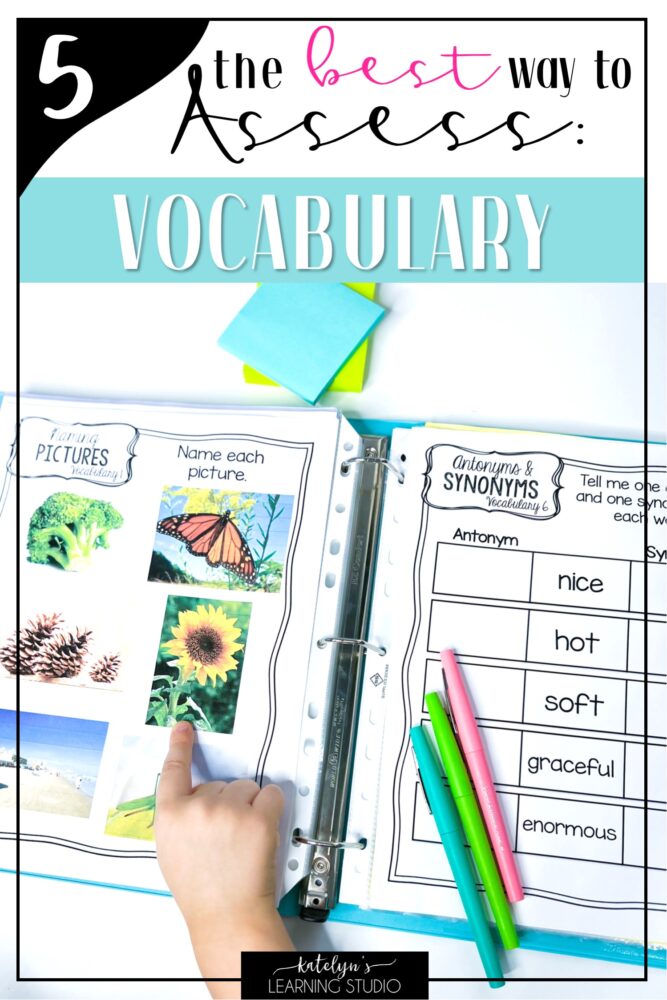
Assess vocabulary by using fill-in-the-blank, multiple-choice, or short-answer questions like in this ready-made vocabulary assessment.
Vocabulary is a little different when it comes to assessment. Using context clues is part of having a strong vocabulary. They don’t always have to know the exact dictionary definition for each word, but they should know how to use words and understand them in context. We still don’t want them randomly guessing, but using context clues is definitely okay.
For more ideas on ways to teach vocabulary strategies, see this post.
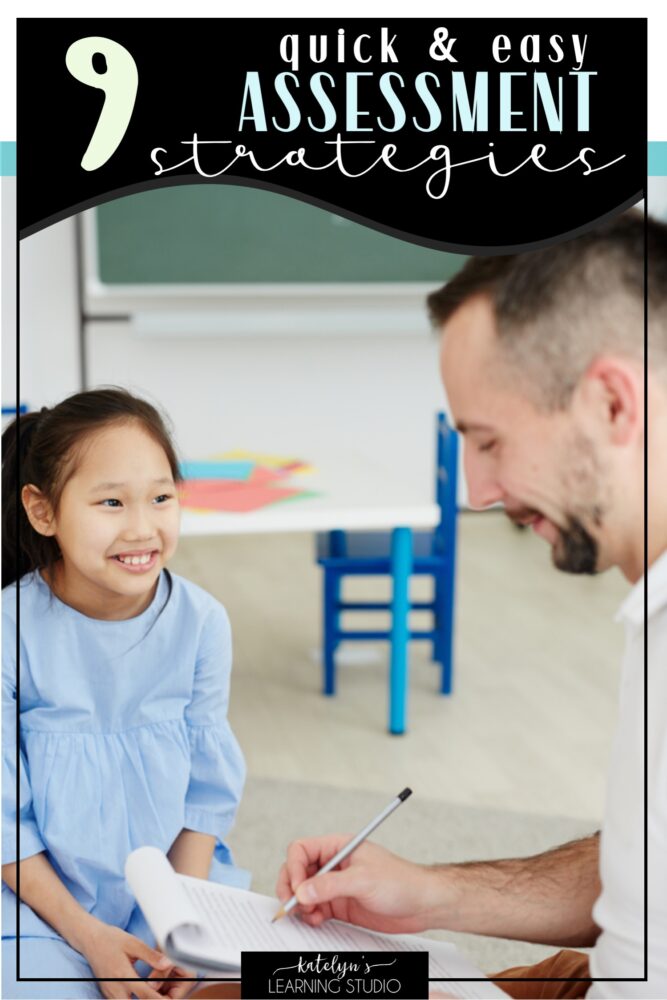
These assessment strategies will help make your assessments easier and more reliable.
I want to end with some basic assessment strategies you can use in the classroom when assessing reading with students. These will help your test results be more accurate and useful.
When you pick the right assessments for reading and use the right assessment strategies in the classroom, it can add so much value to your teaching. The way you assess reading can guide your instruction and give you valuable information as long as you are using the right types of reading assessments. So don’t shy away from that reading test if you need more information on how to best help your student!